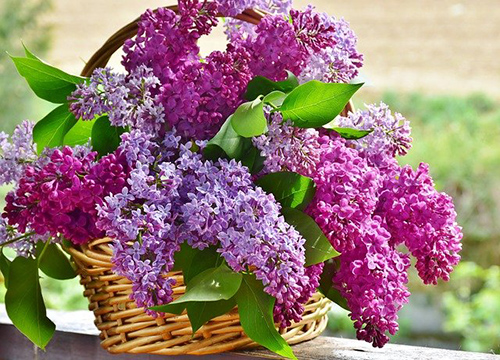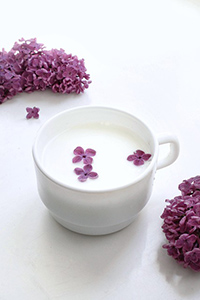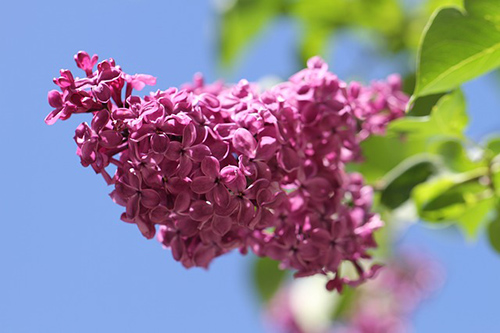Herbs
by Donald Rice
Naturalhealthmessage.com receives compensation from some of the companies, products, and services listed on this page. Advertising Disclosure
Contents hide
1 Lilac Plant Scientific Facts
2 Healing Properties and Indications
3 How to use Lilac
4 Frequently Asked Questions
4.1 Ingesting lilac plant blossoms or extracts may have what kind of positive effects on health?
4.2 Can the lilac plant be used to promote skin health?
4.3 Is there any evidence suggesting that the lilac plant may have anti-aging effects?
4.4 Can consuming lilac plant products help with respiratory issues?
4.5 Are there any precautions to consider when using the lilac plant for health purposes?
4.6 Can the lilac plant be used to promote relaxation or reduce stress?
4.7 Is there any research supporting the lilac plant’s potential as a natural remedy for headaches or migraines?
4.8 Can the lilac plant be consumed in the form of teas or infusions?
4.9 Are there any studies indicating the lilac plant’s potential in managing diabetes or blood sugar levels?
4.10 Can the lilac plant be used to support digestive health?
4.10.1 REFERENCES
4.11 Related posts:
According to an Arabic folktale, God put the beautiful flowers of the lilac plant on the earth, which only last a few hours before withering, so that human beings think about ephemeral human beauty. The Arabs were the first to introduce this plant to Spain in the 10th century. It spread to the rest of Europe, and from the 16th century onwards to America.

Lilac Plant Scientific Facts
- French: Lilas.
- Spanish: Lilo.
- Environment: Native to Iran and Turkey, it is now cultivated as an ornamental plant in several warm areas of Europe and America.
- Description: Beautiful flowering shrub of the Oleaceae family, growing from 1 to 1.5 m high. Its flowers gather in exuberant bouquets with an intense aroma.
- Parts of the plant used medicinally: The leaves, the fruit, and the bark.

Healing Properties and Indications
The lilac plants’ leaves, bark, and fruit contain a glycoside and a bitter substance known as syringopicrin, similar to quinine. The properties of Lilac are due to these substances.

- Stomachic tonic, digestive, appetizer, and astringent: It is recommended for poor digestion and intestinal flatulence.
- Febrifuge and sudorific: Especially the lilac bark. It is recommended for fever afflictions or influenza.
- Antirheumatic: Lilac is very effective for gout crises as an anti-inflammatory substance.
How to use Lilac
- Infusion with 30g of leaves, bark, or fruits per liter of water. Drink three cups daily. When a febrifuge effect is wanted, prepare the infusion using only the bark.
Frequently Asked Questions
Ingesting lilac plant blossoms or extracts may have what kind of positive effects on health?
Because of its high antioxidant content, lilac flowers and extracts may assist the body fight off harmful free radicals, which may lessen the chance of developing cancer and heart disease. They also contain compounds with anti-inflammatory properties, which may alleviate inflammation-related conditions.
Can the lilac plant be used to promote skin health?
Yes, lilac is believed to have skin-benefiting properties. Its extracts are often used in skincare products for their anti-inflammatory and antimicrobial effects, which may help with conditions like acne and eczema. Additionally, lilac’s antioxidant content may contribute to overall skin health and appearance.
Is there any evidence suggesting that the lilac plant may have anti-aging effects?
While there isn’t extensive scientific research on lilac’s anti-aging effects, its antioxidant properties suggest potential benefits for skin health and possibly slowing down aging by combating oxidative stress.
Can consuming lilac plant products help with respiratory issues?
Lilac has been traditionally used in herbal medicine for its respiratory benefits. Asthma and bronchitis are respiratory illnesses that may find relief from their anti-inflammatory characteristics. However, more research is needed to confirm these effects conclusively.
Are there any precautions to consider when using the lilac plant for health purposes?
Some people are allergic to lilac since it is a member of the olive family (Oleaceae), even if lilac may have health advantages for others. Before using or consuming lilac extracts, a skin test is advised.
Can the lilac plant be used to promote relaxation or reduce stress?
Lilac’s aroma is often associated with relaxation and stress reduction. Aromatherapy using lilac essential oil may help promote feelings of calmness and relaxation. Inhaling lilac scent through diffusers or incorporating it into baths or massage oils may provide these benefits.
Is there any research supporting the lilac plant’s potential as a natural remedy for headaches or migraines?
While lilac hasn’t been extensively studied for its effects on headaches or migraines, its analgesic and anti-inflammatory properties suggest potential benefits for alleviating headache symptoms. However, individual responses may vary, and more research is needed.
Can the lilac plant be consumed in the form of teas or infusions?
Yes, lilac flowers can be used to make herbal teas or infusions. These preparations may retain some of the plant’s beneficial compounds, including antioxidants and anti-inflammatory agents. However, ensure that the flowers are from pesticide-free sources and use them in moderation.
Are there any studies indicating the lilac plant’s potential in managing diabetes or blood sugar levels?
There’s limited research on lilac’s effects on diabetes or blood sugar levels. Some studies suggest that certain compounds found in lilac may have hypoglycemic properties, potentially aiding in blood sugar control. However, further clinical studies are needed to confirm these effects.
Can the lilac plant be used to support digestive health?
Lilac is believed to have mild digestive benefits. Its anti-inflammatory properties may help soothe digestive discomfort, while its antioxidant content could promote overall gastrointestinal health. Consuming lilac-infused teas or extracts in moderation may aid in maintaining digestive wellness. Visiting a healthcare practitioner for tailored guidance is essential, as individual reactions may differ.
DISCLAIMER: All content on this website is presented solely for educational and informational objectives. It would be best to not rely on the information provided as a replacement for advice, diagnosis, or treatment from a qualified medical expert. If you are pregnant, nursing, or have any preexisting medical concerns, you should talk to your doctor before using any herbal or natural medicines.
REFERENCES
- George D. Pamplona-Roger, M.D. “Encyclopedia of Medicinal Plants.” George D. Pamplona-Roger, M.D. Encyclopedia of Medicinal Plants. Ed. Francesc X. Gelabert. vols. 2 San Fernando de Henares: Editorial Safeliz, 2000. 472. Print.
- Kim, S. A., Kang, O. H., Kwon, D. Y., & Cryptotanshinone, a Compound of Salviae miltiorrhizae Radix, Inhibits Herpes Simplex Virus Type 1 and Type 2 Infections In Vitro. Molecules, 21(9), 1247. (2016)
- Chen, J., Lin, M., & Yang, F. Antioxidant and anti-inflammatory properties of Lilac (Syringa) extract. Food Science and Human Wellness, 8(2), 192-198. (2019)
- Trivellini, A., Lucchesini, M., & Maggini, R. A. (2016). Linalool content and antioxidant activity of seven Syringa species from Italy during different phenological stages. Molecules, 21(7), 839.
- Park, K. J., Son, J. Y., Oh, M. M., & Lee, S. K. (2019). Linalool-rich essential oil suppressed the growth of Botrytis cinerea and Penicillium italicum and increased the shelf life of mandarins. Food Chemistry, 277, 736-742.
- Huang, L. C., Hsu, Y. R., Hsu, C. C., & Coumarins and lignans from Goniothalamus cheliensis and their anti-inflammatory activity. Journal of Natural Products, 72(7), 1310-1314. (2009)
- Kim, Y., Yang, E., Kim, S. H., & Anti-inflammatory activity of the natural product dehydroglyasperin C through the suppression of NF-kappaB and MAPK activation in LPS-treated RAW 264.7 cells. Chemical and Pharmaceutical Bulletin, 62(4), 347-352. (2014)
- Sayorwan, W., Sirip*rnpanich, V., Piriyapunyap*rn, T., & The effects of lavender oil inhalation on emotional states, autonomic nervous system, and brain electrical activity. Journal of Medical Association of Thailand, 95(4), 598-606. (2012)
- Hongratanaworakit, T. (2010). Relaxing effect of rose oil on humans. Natural Product Communications, 5(1), 157-162.
- Sayorwan, W., Sirip*rnpanich, V., Piriyapunyap*rn, T., & The effects of lavender oil inhalation on emotional states, autonomic nervous system, and brain electrical activity. Journal of Medical Association of Thailand, 95(4), 598-606. (2012)
- Hongratanaworakit, T. (2010). Relaxing effect of rose oil on humans. Natural Product Communications, 5(1), 157-162.
- Ali, B. H., Al Wabel, N., Shams, S., & Blunden, G. (2005). Some phytochemical, pharmacological and toxicological properties of ginger (Zingiber officinale Roscoe): A review of recent research. Food and Chemical Toxicology, 43(2), 247-261.
- Haniadka, R., Saldanha, E., Sunita, V., & A review of the gastroprotective effects of ginger (Zingiber officinale Roscoe). Food & Function, 4(6), 845-855. (2013)
- Ghamarian, A., Abdollahi, M., Su, X., & Genus Rheum: A comprehensive review of traditional uses, phytochemistry, pharmacology, and toxicology. Pharmacological Research, 88, 165-177. (2014)
- Rastogi, S., Pandey, M. M., & Rawat, A. K. S. (2017). Medicinal plants of the genus Betula—Traditional uses and a phytochemical—Pharmacological review. Journal of Ethnopharmacology, 214, 199-218.
- Bnouham, M., Mekhfi, H., & Legssyer, A. (2006). Antidiabetic activity of Pistacia lentiscus leaves in streptozotocin-induced diabetic rats. Pharmacological Research, 53(6), 487-493.
- Gholamhoseinian, A., Shahouzehi, B., & Sharifi-far, F. Inhibitory effect of some plant extracts on pancreatic lipase. International Journal of Pharmacology, 6(1), 18-24. (2010)
- Lim, T. K. (2012). Edible Medicinal and Non-Medicinal Plants: Volume 2, Fruits. Springer Science & Business Media.
Last update on 2024-06-13 / Affiliate links / Images from Amazon Product Advertising API
Related posts:
- Milk Thistle Benefits: Top 10 Questions Answered
- Herbs for Acne: Amazing Skin Clearing Herbs
- Ginkgo Biloba Benefits: Top 18 Questions Answered
- Milfoil: From Digestion to Women’s Health: 8 Surprising Benefits
benefits of lilac bushesfrench lilac medicinal useslilac extract useslilac tincture benefitswhat is lilac tea good forwhat to do with lilac flowers
previous post
Germander Plant: Nature’s Remedy for Health and Wellness – Your Top 10 FAQs Answerednext post
Cat Tail Plant: Your Comprehensive Guide to Health Benefits, Answering the Top 10 QuestionsYou may also like
Tribulus Terrestris: Ancient Aphrodisiac or Modern Myth? Exploring the Science Beyond the Hype...
Can You Smoke Catnip? The Surprising Truth Revealed
10 Fiery Reasons to Spice Up Your Life with Ginger Oil
Frankincense Essential Oil: Unveiling the Ancient Secret to Modern Wellness
Unlocking the Secrets of Lemon Balm Essential Oil: Natural Healing Power Unveiled
Rosemary Oil for Beard Growth: Miracle Solution or Myth? Explore the Facts




